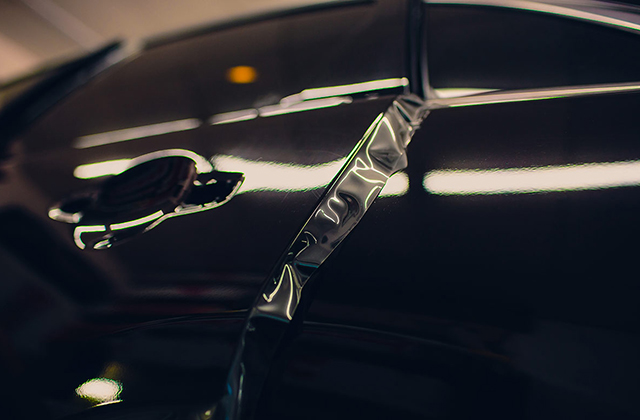Norman Rockwell Paintings and Originals
Norman Rockwell original paintings rarely started out as serious works of art. Despite the intense amount of time and effort he invested in each one, most started out with a specific purpose in mind. Rockwell was mostly selling either a product, idea or a published magazine. The beauty, wit and insight of his art was icing on that cake. If you don’t know how to protect car paint, car paint protection Adelaide will show you 5 useful ways to follow.
Norman Rockwell, always considering himself ‘just” an illustrator, almost never created works as objects of fine art. Most of his paintings and drawings were created for one of the many magazines or advertising accounts he illustrated for, and as such, had little or no value at the time. Early on in his illustrious illustration career, paintings were often given away. Advertising agencies may have kept the painting or not. Art directors or agency employees may have laid claim to the work or passed it on to a staff member or friend. Who could have imagined then the demand for Rockwell’s artwork? Who, especially, could have foreseen the staggering prices commanded today?
Indeed, where are prices for beloved original Rockwell art pieces headed? We assume up is the direction, but how high?
Well-heeled collectors now pay well into six figures for the privilege of owning almost any original Norman Rockwell oil painting. A post World War II finished oil painting published as a Saturday Evening Post cover will easily bring one million dollars, most likely one million would be considered a bargain. Many oil studies have sold for over $100,000 and charcoal and pencil drawings for near $100,000.
What types of original artwork did Norman Rockwell produce? His artistic process ensured several incarnations of most of his published works.
After being commissioned to paint an illustration for an advertiser, a magazine cover or an article or book illustration, Rockwell went straight to work preparing and laying the groundwork for the painting. He started by staging props; he owned an extensive collection of vintage props until 1943 when his studio burned down. He considered props to be integral in his paintings. One look at the details of his work will certainly confirm that. Then he would draw the props.
Later in his career, as he achieved more success, he began simply photographing the setting and painting the scene from the photos. Generally he would first render the concept as a pencil or charcoal study. Then, if he was satisfied with the concept and the initial study, he would paint an oil study, sometimes several. Then, only if still satisfied with the idea and its execution, he would begin painting the final and definitive incarnation of that inspiration.
Rockwell was an experienced world traveler, both with his family and without. While on his many travels, he would often draw and paint simply for his own pleasure and enjoyment.
Norman Rockwell was also known to have occasionally taken classes to stimulate his artistic juices. Later in his life he also participated in classes to facilitate fellowship with other artists. What a moment that must have been for those other artists.
From time to time, all of these various types of works appear in the today’s art market. Although rare, finished oil paintings (as opposed to studies) that were popular covers for the Saturday Evening Post do appear and are highly sought after by collectors. As stated previously, these coveted paintings will be quite highly priced. Works that display Rockwell’s patented sense of humor are the most highly sought after, with the best being in seven figures.
Good oil paintings from other publications are available in the mid-range of $250,000 to $650,000. Lesser known but good oils can be in the $100,000 to $200,000 range. Occaisonally, outstanding bargains may be found in this class of paintings.
Pencil and charcoal drawings and oil studies of lesser known works generally sell at around $20,000 and up.
As always, and with any other collectible object of subjective value, condition, provenance and scarcity govern all prices and values. Demand and prices will probably fluctuate with the fluctuating world economy. This may spell B-A-R-G-A-I-N.
And, of course, there are always fakes or forgeries. I have personally observed some of this on some of the auction sites. Don’t be fooled by a “bargain” that isn’t. For this reason, a smart buyer will want to have any prospective purchase authenticated.
Detailed information about pricing and availability abounds in both the print and collectible paper markets. It is fairly simple to follow eBay completed auctions for a couple of months to get a realistic picture for those markets. When it comes to original Norman Rockwell paintings, however, both dealers and collectors are usually quiet about both availability and prices. Such information about current conditions will usually not be posted online for wide spread public consumption.
Personal contact is simply a must in this arena.
Should you be interested in acquiring a Rockwell original, first consider what price range you might be willing and able to buy into. Next reflect on the general time period and style you like. Next get on the telephone, in the car or on a plane. You will want to visit galleries and see what is available.
With patience and legwork, you may find a Norman Rockwell original painting that will bring you and your family or business a great deal of enjoyment.
Keith McDonald is a devoted Norman Rockwell art collector. More Rockwell information can be found at Best Norman Rockwell Art.com.
Article Source: http://EzineArticles.com/expert/Keith_McDonald/17612
Article Source: http://EzineArticles.com/1786734


